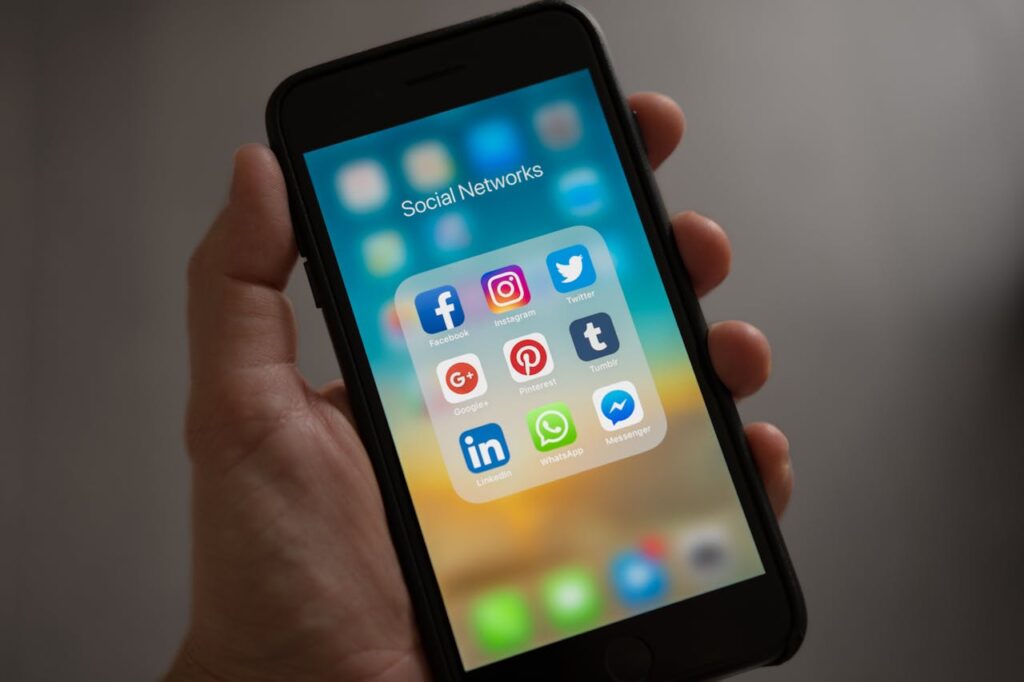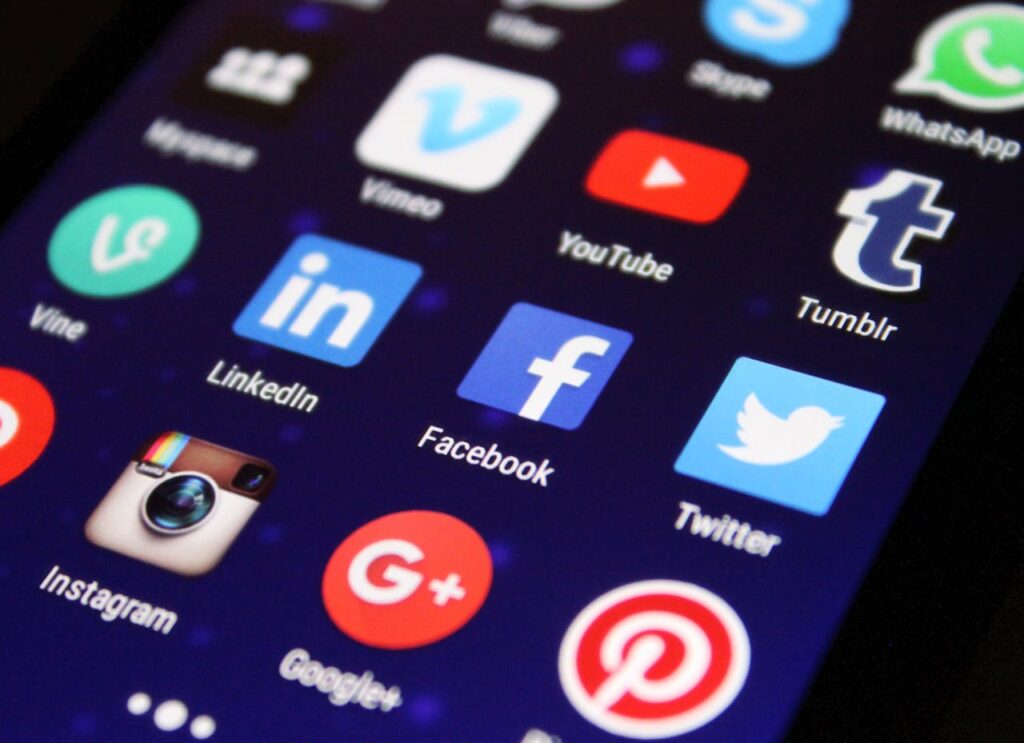In the fast-moving world of social media, when you post can be just as important as what you post. Timing affects visibility, engagement, and ultimately, the success of your content. Even the most creative campaigns can underperform if shared when your audience isn’t online.
For UK-based brands, understanding local user behavior is key to maximizing impact. From the early morning scroll during commutes to evening browsing after dinner, UK audiences have distinct digital habits across platforms like Instagram, Facebook, LinkedIn, and TikTok. Factoring in these patterns—along with time zone alignment and national routines—can dramatically improve how your posts perform.
In this blog, we’ll explore the best times to post on major social media platforms specifically for UK audiences. You’ll discover platform-specific insights, industry-based timing tips, and practical tools to test and optimize your schedule—so you can publish smarter, not just more often.
General Posting Trends in the UK
Before crafting your social media calendar, it’s essential to understand when UK users are most active online. While habits vary across industries and audiences, there are consistent trends that can guide your posting schedule and help increase engagement across platforms.
Platform-by-Platform User Activity Overview
- Facebook:
UK users are most active during mid-morning (9 AM–11 AM) and early evening (6 PM–8 PM). Engagement tends to dip during working hours but spikes around lunch and after work, making these prime windows for posting. - Instagram:
Peak times are generally 7 AM–9 AM and 7 PM–9 PM. UK users scroll first thing in the morning and in the evenings. Stories and Reels often perform better in the evening when users are more relaxed and ready to consume visual content. - LinkedIn:
For B2B brands, weekdays during working hours—especially Tuesday to Thursday, from 8 AM–10 AM—are ideal. Activity typically drops on weekends when professionals are offline. - TikTok:
Usage is high in the evenings (especially 6 PM–10 PM), with younger UK audiences spending long periods on the app after school or work. Weekend afternoons also see solid engagement. - X (Twitter):
Twitter sees consistent activity throughout the day, but mornings (around 8 AM) and late afternoons (4 PM–6 PM) offer higher visibility, especially for news, trending topics, and brand updates.
Weekday vs. Weekend Engagement
- Weekdays:
These are generally more reliable for engagement, especially on platforms like LinkedIn and Facebook. Users tend to stick to routines, checking social media during breaks or commute times. - Weekends:
While LinkedIn activity drops, platforms like Instagram and TikTok often perform better on weekends—particularly in the afternoon and evening—when users have more leisure time to scroll and engage.
Time Zones and Brand Relevance
- UK-Only Brands:
Posting in GMT/BST (British time) is crucial. You should align your content with your local audience’s daily rhythm to maximize reach and engagement. - Global Brands Targeting UK Audiences:
It’s essential to segment your audience and create separate posting schedules. If your brand operates in multiple time zones, consider using platform scheduling tools that allow for localized timing.
Understanding these trends helps you avoid the trap of posting at random and instead build a strategic calendar that reaches your UK audience when they’re most likely to engage.
Platform-Specific Best Times to Post
To maximize engagement and visibility, it’s important to tailor your posting schedule to the behavior patterns of UK users on each social media platform. Here’s a breakdown of the best times to post, based on current usage trends and audience habits in the UK.
Facebook: Peak Engagement Hours for UK Users
- Best Times:
Weekdays at 9 AM–11 AM and 6 PM–8 PM - Why It Works:
UK users tend to check Facebook during morning breaks and after work hours. Mid-morning posts catch people settling into their day, while evening posts reach those relaxing at home. - Pro Tip:
Avoid posting during late afternoons (3 PM–5 PM), when engagement typically dips.
Instagram: Optimal Times for Reels, Stories, and Static Posts
- Best Times:
- Reels: 6 PM–9 PM (evening entertainment window)
- Stories: 7 AM–9 AM and 12 PM–2 PM (morning scroll and lunchtime)
- Static Posts: 8 AM–10 AM or 7 PM–9 PM
- Why It Works:
Instagram’s UK users are highly active during their morning commute and evening downtime. Reels gain traction in the evenings, while stories perform best when users are taking quick breaks. - Pro Tip:
Use insights to test content format timing individually, as UK engagement varies by industry.
LinkedIn: Best Times for B2B Brands in the UK
- Best Times:
Tuesday to Thursday, 8 AM–10 AM and 1 PM–2 PM - Why It Works:
LinkedIn’s professional audience is most active during working hours, particularly mid-week. Posting before the workday begins or around lunch maximizes visibility in the feed. - Pro Tip:
Avoid posting after 5 PM or on weekends—engagement drops significantly.
TikTok: When Short-Form Content Performs Best
- Best Times:
Weekdays 6 PM–10 PM, Weekends 2 PM–5 PM - Why It Works:
UK users typically engage with TikTok in the evenings or during relaxed weekend afternoons. Short-form videos perform best when users have time to watch and scroll without distractions. - Pro Tip:
Consistency is key—posting at the same time daily can help TikTok’s algorithm favour your content.
X (Twitter): Timing for News-Driven or Trend-Based Content
- Best Times:
Weekdays 8 AM–10 AM and 4 PM–6 PM - Why It Works:
Twitter is used heavily for real-time updates, morning news, and trend commentary. Early posts get visibility during the morning scroll, while late afternoon slots benefit from end-of-day recaps. - Pro Tip:
Join trending hashtags or UK-based conversations during peak news hours to boost reach.
Each platform serves different purposes, and aligning your posting times with your audience’s daily habits in the UK ensures you’re showing up when it matters most.
Industry-Based Posting Insights
While general timing trends provide a good foundation, drilling down by industry can help you fine-tune your strategy even further. Different sectors attract different types of audiences with unique routines and online behaviors. Here’s a breakdown of the best times to post for some of the most active UK industries on social media:
Retail & E-commerce
- Best Times:
Wednesday to Saturday, 11 AM–1 PM and 7 PM–9 PM - Why It Works:
UK consumers tend to browse and shop online during lunch breaks and in the evenings when they have downtime. Weekends also perform well, especially for promotional posts and flash sales. - Pro Tip:
Use Instagram and Facebook during peak scrolling hours to showcase products with high-quality visuals and swipe-up links or CTAs.
Hospitality (Restaurants, Cafés, Hotels)
- Best Times:
Daily from 11 AM–2 PM and 6 PM–9 PM - Why It Works:
People typically search for food inspiration before meals or plan hotel stays in the evening. Posting just before peak meal times boosts chances of last-minute decisions or bookings. - Pro Tip:
Share stories, menu highlights, or booking offers right before lunch and dinner times to influence real-time choices.
Professional Services (Consultants, Agencies, B2B)
- Best Times:
Tuesday to Thursday, 8 AM–10 AM and 1 PM–2 PM - Why It Works:
LinkedIn and Facebook users in this sector are most active during business hours, particularly at the start of the day and during lunch breaks. - Pro Tip:
Position thought leadership content or service promotions early in the week to catch decision-makers while planning their week.
Health & Fitness
- Best Times:
Weekdays at 6 AM–9 AM and 5 PM–8 PM - Why It Works:
Fitness enthusiasts in the UK tend to scroll before or after workouts—early morning and post-work hours are ideal. Weekend mornings also see strong engagement. - Pro Tip:
Post motivational content, workout tips, or class schedules early in the morning to encourage same-day participation.
Education or Training Businesses
- Best Times:
Monday to Friday, 12 PM–2 PM and 6 PM–9 PM - Why It Works:
Students and adult learners are most active online during lunch breaks and evenings when they research courses or watch educational content. - Pro Tip:
Use these hours to promote upcoming webinars, enrollment deadlines, or success stories across Instagram, Facebook, and LinkedIn.
Understanding your industry’s unique audience patterns helps you post with precision—reaching the right people when they’re most likely to pay attention, interact, and convert.
Tools to Identify Your Best Posting Times
Knowing the general best times to post is helpful, but real success comes from identifying when your specific audience is most active. Fortunately, there are several tools available that offer detailed insights into your audience’s behavior—so you can schedule posts with precision.
1. Meta Business Suite Insights (for Facebook & Instagram)
- What It Does:
Meta Business Suite provides free, built-in analytics for both Facebook and Instagram pages. It shows when your followers are online by day and hour, post performance, reach, engagement, and demographics. - How to Use It:
Go to “Insights” > “Audience” to view when your followers are most active. Use this data to schedule posts during peak times to increase reach and engagement. - Pro Tip:
Track trends weekly, as your audience behavior can shift during different seasons or campaigns.
2. Instagram Insights (via Mobile App)
- What It Does:
For business or creator accounts, Instagram offers native insights that break down follower activity, including most active times, days, and content type performance (stories, reels, posts). - How to Use It:
Navigate to your profile > Insights > Your Audience > Most Active Times to see when your followers are online. - Pro Tip:
Compare data for Reels vs. Feed Posts, as they often perform better at different times.
3. Third-Party Scheduling and Analytics Tools
If you’re managing multiple platforms or looking for more detailed reports, third-party tools are ideal. Here are some popular options:
- Buffer:
Suggests optimal posting times based on past engagement. Great for small to medium-sized businesses. - Hootsuite:
Offers advanced analytics, including heatmaps showing your top-performing times and days. - Later:
Known for its visual content calendar and Instagram-specific timing insights. Great for visually-driven brands. - Sprout Social:
Provides robust reports, cross-platform data, and optimal send time suggestions based on machine learning and your followers’ behavior. - Pro Tip:
Most tools let you automate posting based on the best times for engagement—freeing up time while maximizing results.
These tools help take the guesswork out of scheduling, allowing UK-based brands to post smarter, reach more people, and make every piece of content count.
A/B Testing and Analytics
To fine-tune your social media timing strategy, it’s essential to go beyond assumptions and start testing. A/B testing (also known as split testing) allows you to compare different posting times to see which ones drive the best results for your unique audience—helping you make data-backed decisions and improve performance over time.
How to Test Different Times and Measure What Works Best
- Choose One Variable: Start by testing the same post at two different times (e.g., 10 AM vs. 7 PM) while keeping the content identical.
- Track Key Metrics: Monitor engagement (likes, comments, shares, saves), click-through rate (CTR), and conversions to evaluate which time performed better.
- Test Over Multiple Days: Run the test across different days of the week to account for routine variations (e.g., Monday morning vs. Friday afternoon).
- Use Analytics Tools: Platforms like Meta Business Suite, Instagram Insights, or third-party tools like Hootsuite and Sprout Social provide easy-to-read performance reports.
Why Engagement Rate Matters More Than Reach
- Reach tells you how many people saw your post—but not how they interacted with it.
- Engagement Rate (interactions ÷ impressions or followers) shows how well your content resonated with your audience.
- A post seen by fewer people at the right time with high engagement is more valuable than a widely seen post with little interaction.
Example:
If a post at 8 PM reached 1,000 people and got 100 interactions, that’s a 10% engagement rate. A post at 3 PM may reach 2,000 people but get only 50 interactions—a lower 2.5% engagement rate. The 8 PM slot is clearly stronger.
Tips for Scheduling and Automation
- Use Scheduling Tools: Platforms like Buffer, Later, or Meta Business Suite let you schedule posts during your highest-performing windows, even outside business hours.
- Batch Your Content: Plan a week or month of posts in advance and schedule them for peak times, saving time and improving consistency.
- Review and Adjust Weekly: Check analytics weekly or monthly to spot patterns and fine-tune your schedule accordingly.
- Automate with Precision: Use auto-posting features, but always pair them with regular review sessions to avoid posting at low-performing times.
A/B testing combined with analytics transforms guesswork into strategy. By consistently testing post times and tracking real results, you’ll discover when your UK audience is truly paying attention—and how to keep them engaged.
UK Cultural Factors That Affect Timing
When planning your social media schedule for a UK-based audience, it’s not just platform algorithms and engagement metrics that matter—cultural habits and routines play a big role too. Understanding the UK’s seasonal patterns, daily behaviors, and national events will help you post content that feels timely, relevant, and relatable.
Seasonal Habits
- Summer Holidays:
During July and August, many UK users are on vacation or spending time outdoors. Engagement tends to shift to early mornings or late evenings when users are more likely to check their phones. Lifestyle and travel-related content also sees a rise. - Christmas & Black Friday Season:
From late November through December, users are highly active in the evenings, browsing for gift ideas and deals. Promotional posts, festive visuals, and countdown offers work best during this time—especially after work hours (6 PM–10 PM). - Back-to-School & New Year:
Early September and January are popular for educational, productivity, and self-improvement content. Users are more receptive to training offers, coaching, and business services.
Daily Routines
- Morning Commutes (7 AM–9 AM):
Users often scroll social media while on trains or buses. This is a great time for bite-sized content like news updates, motivational posts, or short videos. - Lunch Break (12 PM–2 PM):
Engagement peaks as people check their phones during lunch. Ideal for promotions, product posts, or blog links. - Evening Scroll (7 PM–9 PM):
This is the most consistent high-engagement window. Users are unwinding and more open to exploring content, shopping, and watching reels or TikToks. - Late Night Browsing (9 PM–11 PM):
Particularly popular among younger audiences and students. Soft-sell content, entertainment, and stories often perform well here.
Event Timing
- Bank Holidays:
On long weekends, users are more active during daytime hours (10 AM–4 PM). Content related to relaxation, travel, or sales can gain extra traction. - Major Sporting Events:
During events like the Premier League, Wimbledon, or Six Nations Rugby, users may be distracted or hyper-focused on match content. Consider engaging with the event or posting around non-match times. - National Celebrations & Trends:
Events like the King’s Birthday Parade, Bonfire Night, or Pride Month can offer timely hooks for branded content—if relevant to your brand.
Being culturally aware of how UK audiences spend their time throughout the year helps your brand stay visible, connected, and relevant—whether you’re launching a campaign or just planning your weekly posts.
Conclusion: Best Times to Post on Social Media for UK-Based Brands
Timing is everything when it comes to social media success—and for UK-based brands, aligning your posts with local habits, routines, and cultural moments can make a significant difference. Whether it’s early morning commutes, lunchtime scrolls, or evening downtime, knowing when your audience is online is just as important as what you post.
From platform-specific insights to industry trends and seasonal behaviors, we’ve explored the key posting windows that help your content get noticed and engaged with. But remember—what works for one brand might not work for another. That’s why it’s essential to continuously test, track, and refine your posting schedule based on your unique audience data.
If you’re unsure about your current approach or want to boost results with expert support, contact Insight Crafts Marketing for a personalised content calendar audit or social media strategy tailored specifically for UK audiences. Let’s help your brand show up at the right time—and in the right way.




